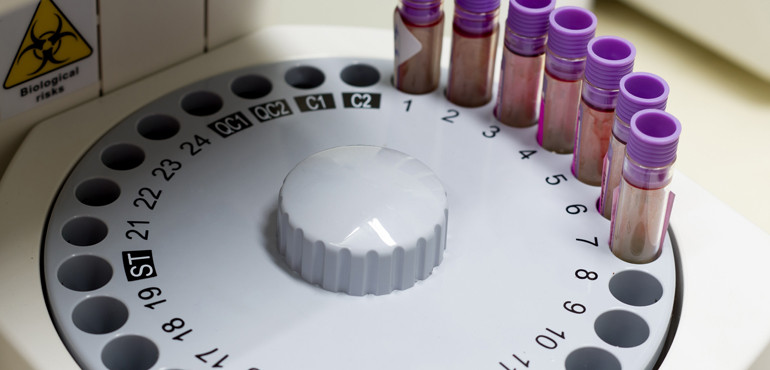Unearthing the tricks behind setting up a smart practice.
There are thousands of clinics in a city however some of them are the absolute favorites. They have healthy revenues and offer a positive patient experience. The key differentiator is the patient centric approach to operational efficiency.
In this post we will take you through the journey of what an automated clinic experience is like. You will be able to see what changes happen when smart solutions are implemented for you to visualize how and what you can change in your clinic through automation.
1. Better Schedule Management
Appointments are where it all starts for a clinic. The first point of contact for the patient when they decide to come and take a consultation at your clinic. Automation gives a number of options to your patients apart from the traditional walk-in option. An automated clinic can provide the patient with the option of taking an online appointment or a telephonic one in addition to the traditional one.
The software arranges all the appointments irrespective of which mode was used to make an appointment. Automation allows clarity in terms of appointments slots available to help manage walk-ins efficiently. It also allows appointments to be taken well in advance, if the clinician permits. Overall, automation allows the first impression to be effective with an efficient schedule management system in place.
2. Better Patient Records Accessibility
A matter of major concern for clinics is when the patient re-visits. Automation allows easy access to patient data for quick and easy look at patient history. Patient information is accessible within a few seconds and at the end of a few clicks. Continuity of care at clinics becomes a reality when automation comes into the picture. Automation allows all patient information, including diagnostic records, to be stored under one unique ID that allows the clinician an insight into the medical history of the patient.
Better access to patient records in turn enhances the performance level of the entire system as easy patient records access means timely medical decisions, reconfirmation on medications and procedures at any point during and after the treatment resulting in better patient outcomes.
3. Better Patient Records Safety
Patient records come with the risk of safe guarding them and limiting the access to the information that they contain. Traditionally stored in filing cabinets with a lock and key, automation provides the perfect solution to this hassle. Clinic Management software store patient data in digital format in an easily accessible location – either on in-house servers or on cloud-based servers. The data is also stored in a safe encrypted format so as to avoid unauthorized access. Moving patient record keeping from outdated filing cabinets to servers, modernizes the complete process with easy and controlled access and also brings down costs incurred on the storage cabinets and space. Automation limits the access through access-controlled logins and offers a much higher level of security compared to the traditional paper mode.
4. Better and Error Free Results
The most frequent errors at clinics can be attributed to human errors owing to carelessness, wrong training, miscommunication, fatigue, stress etc. Automation of your clinic effectively means lowered human intervention. The error levels in the system is reduced significantly, in turn increasing the efficiency of the system many fold. Take scheduling for example. When automated, appointments are auto scheduled and the dependence on human coordination is eliminated. Irrespective of whether the person manning the telephonic appointments and the walk-ins coordinate or not, if each of them perform their work perfectly, the automation will take care of the operations and the patient will not face any hassle.
5. Better Communication and Coordination
Much of the patient’s time is wasted waiting, due to the lack communication and coordination between different departments within the clinic or even different locations in the same city or different cities. For example, it is possible that a PET Scan is available only at a particular center of the clinic or the results of an allergy panel test needs to come from a different center located in another city. Automation leads to real-time communication between departments and in effect increases the speed of the entire process immensely. Much of the communication between the clinicians and the concerned departments becomes a hassle free highway with the inclusion of the clinic management software in the communication channel.
The communication is quick. The decisions based on the communication is speedy. The patient wait time is lowered. And the patient is delighted as much with the speed as with the care.
6. Better Resource Utilization
Automation means a considerable dip in the use of manual resources, be it stationary or manpower;since most of the data is stored on the servers and most of the communication happens through clicks. Only mandatory resources are used in an automated system and this leads to big savings, which adds to the profitability. Automation means you can revamp your manpower allocation. With the introduction of software-supported efficiency, many skills that were traditionally mandatory have begun to lose their existence. Employees can perform most of the automated work with average skills by means of proper training. This means better utilization of skilled manpower at the most effective locations. You don’t have to employ 2 nuclear medicine technologists because 1 writes the reports while the other does the procedure. With reports being taken care of by automation, the technologist can focus on her core skill. This not just leads to better manpower utilization but also to a more satisfied and engaged employee.
Equipment utilization too will see an upward trend because while automation takes care of the reports, auto calibrations etc. the technicians are left with more time to cater to more patients leading to optimum utilization of the equipments.
7. Better Operational Efficiency
With automation comes a change in the way processes are performed at the clinic. Many manual systems undergo a sea change and come to be performed with high efficiency and accuracy. Be it the billing, accessing patient records, coordinating with pharmacy, scheduling and managing appointments or managing inventory; increased efficiency is the big and visible change thereby positively impacting staff performance. Take for example: if a patient comes to the clinic with an emergency case of dog bite, the clinician while examining can ask the junior doctor to immediately check the pharmacy stock for anti-rabies vaccination and advice accordingly. If the vaccination is not available in stock, then the patient’s attendant can rush to a medical store where it is available and the vaccine can be administered quickly; instead of the traditional sequential process. Automation gives smooth wheels to the operations and this in turn impacts patient delight directly.
8. Better Staff Performance
When relieved of the mundane and monotonous tasks as a result of automation of the clinic’s processes, your staff will experience higher self worth and better usage of their skills and talent will be seen. An employee who takes pride in their being at a certain place and performing a certain role will be high on self-motivation and a bigger asset to your workplace. A nurse who had to create and manage documents required for maintaining patient records while responding to patient attendant as well managing clinicians and the administration would be a hassled employee. Automation helps her maintain the patient records using a few clicks and some typing. It relieves her of a lot of paperwork and lets her focus on patient care, exactly what she was trained to do.
9. Better Cost Effectiveness
Clinic Management Systems over time lead to lowered human intervention effectually lowering the number of people in the clinic and bringing down the investment on manpower. It also means nearly paperless clinics thereby reducing the cost of stationary immensely. Clinic Management Systems also help wipe out the cost of records storage as digital records come into play. Automation leads to optimum utilization of all resources that results in satisfied patients and cessation of wastage, both of which are huge contributors to the revenue of the clinic.
Automation is one of the smartest tools around that not just helps you with your operational efficiency but also plays a role in being cost effective to the core.
10. Better Insights Leading To Better Strategies
The biggest advantage of automation is digital data in a form that offers insights. Every task performed through the software will leave a digital record, which is accessible in the form of data. Depending on how feature reach the software is, the quantum of data will vary. Complete automation would mean loads and loads of data stored on your servers giving insight into every task performed at your clinic. A few clicks will give you every kind of report that you need. Data give you accurate actionable insights that help you take important decisions.
The data collected will not just be useful in improving operational efficiency, it will also give you clinical and financial insights. It also helps you get an OPD/ IPD trends picture effectually enabling you to be ready in cases of seasonal outbreaks.
The key message is that automation is inevitable if you want to improve operational efficiency, increase revenues and enhance patient care while lowering costs and plugging revenue leakage. Embrace automation so the doctors can focus on patient care instead of administrative hassels.








